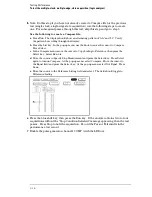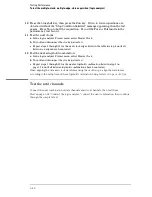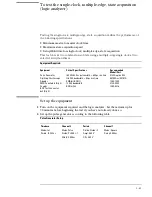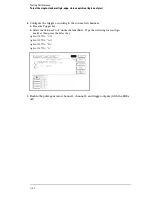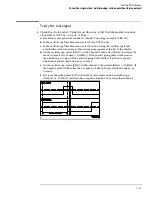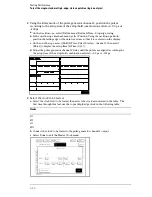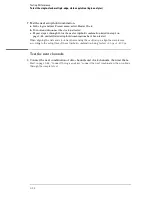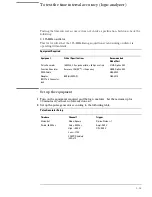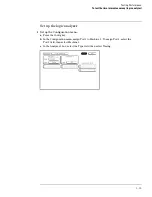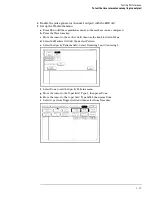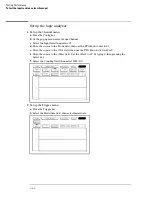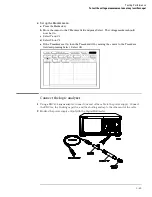
2
Using the Delay mode of the pulse generator channel 2, position the pulses
according to the setup time of the setup/hold combination selected, +0.0 ps or
−
100 ps.
a
On the Oscilloscope, select [Define meas] Define
∆
Time - Stop edge: rising.
b
In the oscilloscope timebase menu, select Position. Using the oscilloscope knob,
position the falling edge of the data waveform so that it is centered on the display.
c
On the oscilloscope, select [Shift]
∆
Time. Select Start src: channel 1, then select
[Enter] to display the setup time (
∆
Time(1)-(2)).
d
Adjust the pulse generator channel 2 Delay until the pulses are aligned according the
the setup time of the setup/hold combination selected, +0.0 ps or -100 ps.
3
Select the clock to be tested.
a
Select the clock field to be tested, then select the clock as indicated in the table. The
first time through this test, use the top multiple-edge clock in the following table.
Clocks
J
↕
K
↕
L
↕
M
↕
b
Connect the clock to be tested to the pulse generator channel 1 output.
c
Select Done to exit the Master Clock menu.
Testing Performance
To test the single-clock, multiple-edge, state acquisition (logic analyzer)
3–50
Summary of Contents for 1670G Series
Page 20: ...1 12...
Page 116: ...Testing Performance Performance Test Record pattern generator 3 92...
Page 126: ...Calibrating and Adjusting To test the CAL OUTPUT ports 4 10...
Page 166: ...Exploded View of the Agilent 1670G series logic analyzer Replacing Assemblies 6 4...
Page 201: ...Theory of Operation The Oscilloscope Board 8 11...



